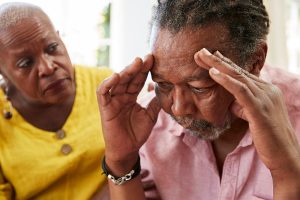During the current coronavirus pandemic, U.S. hospitals are seeing fewer people for signs of stroke, a new study finds.
Evaluations for stroke have dropped nearly 40%, said researchers who looked at data from more than 850 hospitals across the country.
“Our stroke team has maintained full capacity to provide emergency stroke treatment at all times, even during the height of the pandemic,” said researcher Dr. Akash Kansagra, an assistant professor of radiology at Washington University in St. Louis.
“Nevertheless, we have seen a smaller number of stroke patients coming to the hospital and some patients arriving at the hospital after a considerable delay. It is absolutely heartbreaking to meet a patient who might have recovered from a stroke but, for whatever reason, waited too long to seek treatment,” Kansagra said in a university news release.
The researchers examined data from software known as RAPID, which analyzes brain scans of suspected stroke victims. They compared how often the software was used on nearly 232,000 patients nationwide in February, before the pandemic, and from March 26 to April 8, when much of the country was sheltering in place.
Before the pandemic, hospitals saw at least one patient a day with stroke symptoms. Since February, that number fell 39%.
“Even patients with really severe strokes are seeking care at reduced rates. This is a widespread and very scary phenomenon,” Kansagra said.
It’s not likely that the number of strokes has dropped, the researchers noted.
“I suspect we are witnessing a combination of patients being reluctant to seek care out of fear that they might contract COVID-19, and the effects of social distancing,” Kansagra said.
The response of family and friends is important when a loved one is experiencing stroke symptoms, he explained. Oftentimes, family and friends recognize the stroke symptoms and make the call to 911.
“In an era when we are all isolating at home, it may be that patients who have strokes aren’t discovered quickly enough,” Kansagra said.
Signs of a stroke include sudden numbness or weakness in the face, arm or leg, especially on one side of the body; difficulty speaking; confusion; difficulty seeing or walking; and severe headache.
It’s critically important to get stroke care immediately, Kansagra said. The risk of delaying treatment for a stroke is far greater than the risk of getting COVID-19, he added.
“The effect of coming in too late is the same in many respects as not coming in at all,” Kansagra said. “When patients come in too late, they may no longer be candidates for treatments that they would have qualified for just hours before. And as a result, they may not have access to treatments that are extremely effective in reducing death and disability.”
The report was published May 8 in the New England Journal of Medicine.
More information
For more on stroke, see the American Stroke Association.
Source: HealthDay
Copyright © 2025 HealthDay. All rights reserved.

















